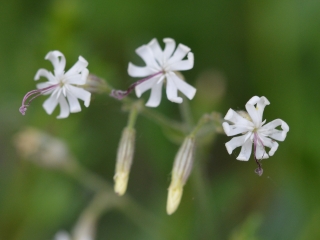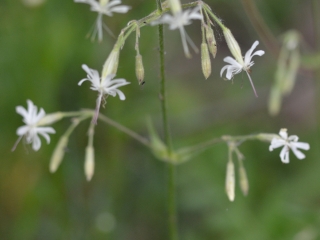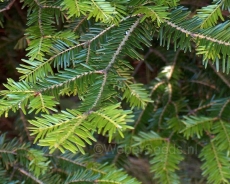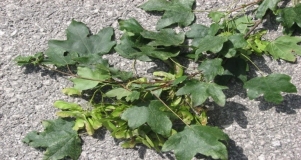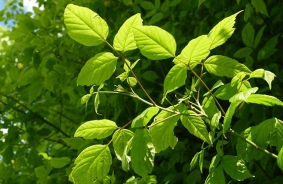Nottingham catchfly Silene nutans
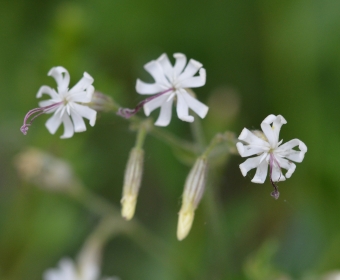
Features
A single flower is usually open for about 3 days to prevent self-pollination. It blooms at night when it attracts nocturnal pollinators with a strong scent, especially nocturnal butterflies.
| Species | Perrenial |
| Living space | Meadow, Treeline |
| Size | 30-80 cm |
Description
Silene nutans is a diploid, mainly outcrossing, herbaceous, perennial plant. It grows up to 25–80 centimetres tall, from a branching, woody stock with a thick taproot. The lower leaves are up to 75 millimetres long, spathulate and have a long stalk, while leaves higher on the plant are lanceolate, subsessile and acute; all the leaves are covered in soft hairs. The flowers are 18 millimetres wide, 12 millimetres long, and drooping, on short, viscid stalks. The petals are white or pinkish and divided into two narrow lobes. Each flower remains open for three nights as a means of preventing self-fertilisation; the flower reveals one whorl of stamens on the first night, the second whorl of stamens on the second night, and the three styles on the third night. The seeds are 10–22 millimetres wide and kidney-shaped.Nottingham catchfly
on the habitat Temenica
It blooms in summer, in the evening and at night.
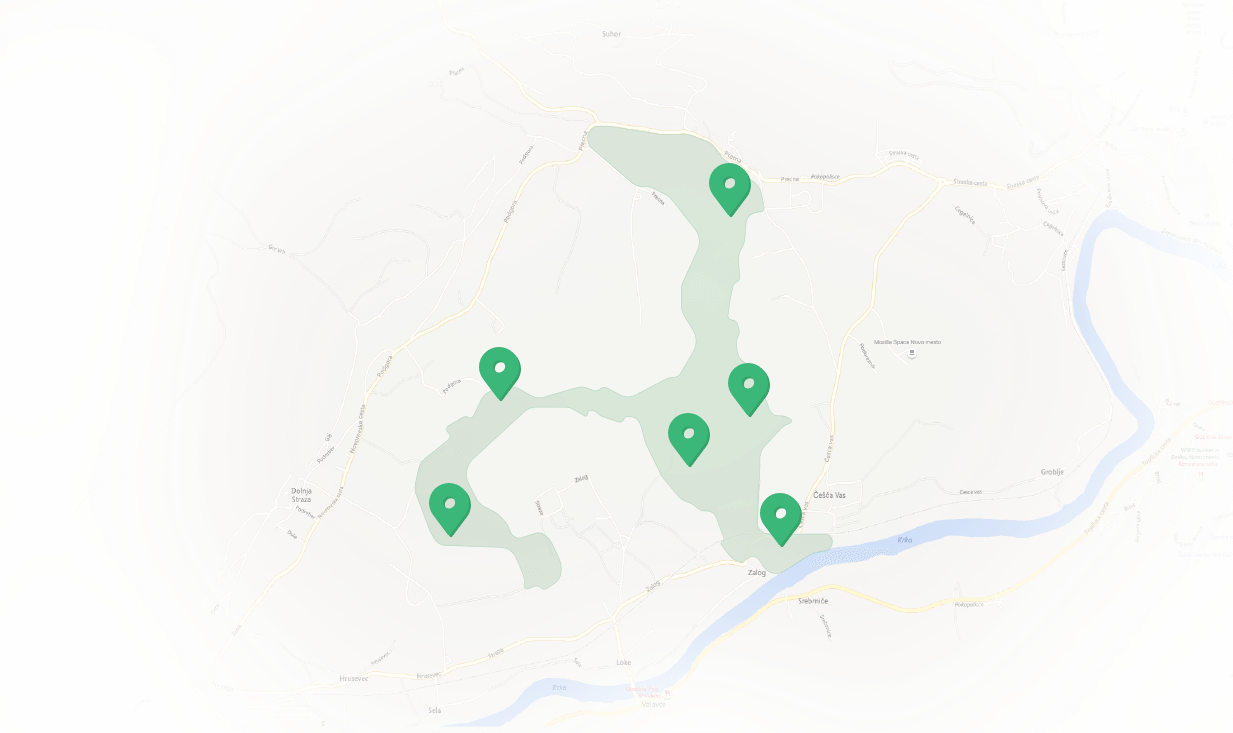
Features Temenica (3)
SPECIAL ogr.

